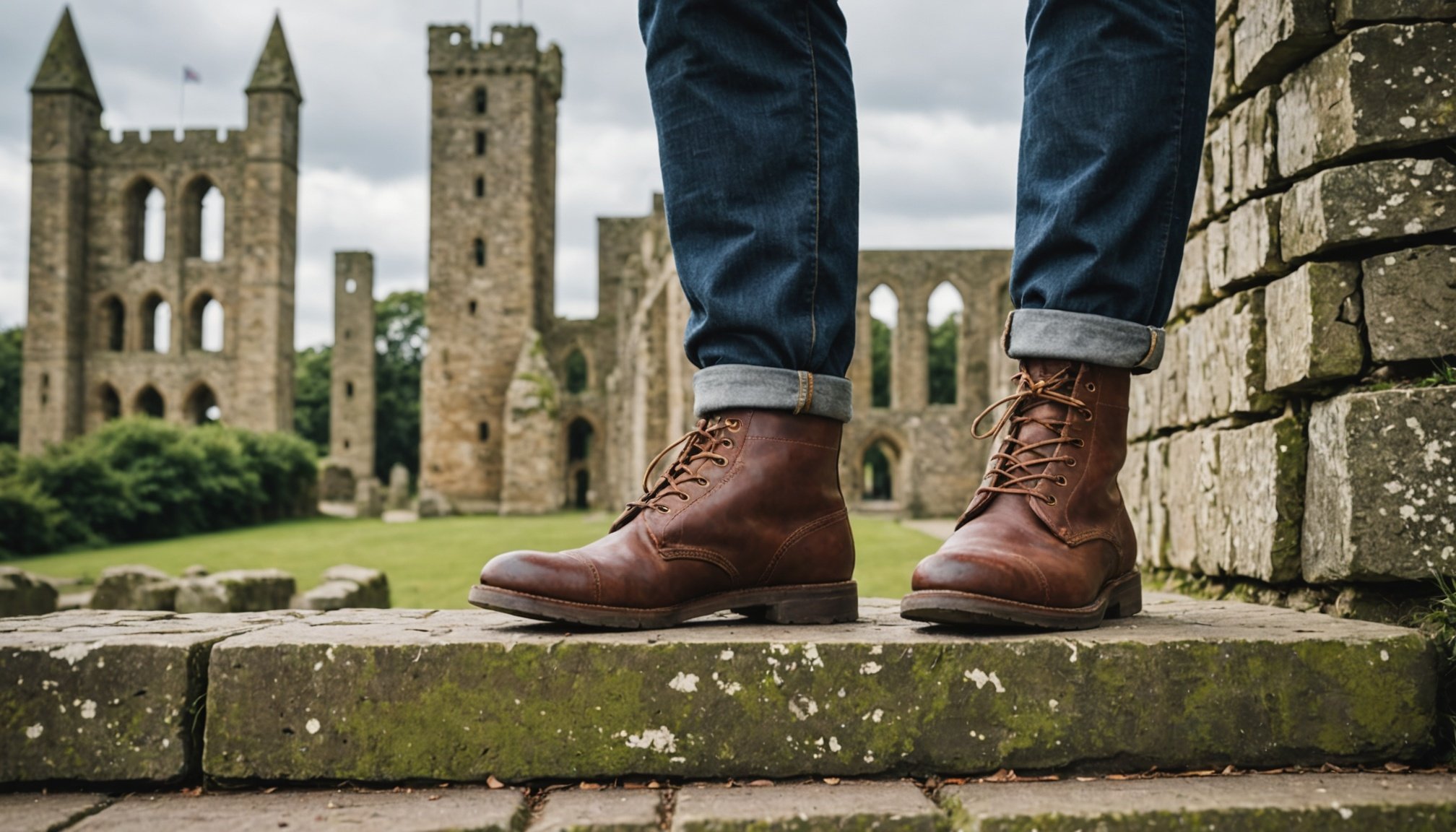Recommended Footwear Types for Exploring Historical Sites
Selecting the right footwear types when visiting historical sites is crucial for comfort and durability. Depending on the terrain—urban streets or rugged rural paths—walking shoes and durable boots each offer unique benefits. Walking shoes, with their lightweight design, are optimal for city tours where long walks on even terrain are common. They provide adequate support and cushioning, making them ideal for exploring museums and urban landmarks.
In contrast, hiking boots are advisable for rural historical sites, often characterised by uneven paths and unpredictable weather. These boots provide robust ankle support and are notably more durable, safeguarding against injuries and enhancing stability on rocky or muddy trails.
Also read : Red cross necklace: symbol of faith and durability
When assessing footwear types, consider features such as waterproofing and breathability. Both walking shoes and hiking boots can feature waterproof materials to protect against unexpected showers or morning dew, while breathable designs ensure feet remain dry and comfortable throughout your explorations.
Ultimately, the right choice hinges on the specific nature of the sites you plan to explore, balancing comfort with practicality to enhance your historical journey.
Have you seen this : Radiate joy: discover the magic of colorful outfits
Key Features of Suitable Footwear
Choosing the right footwear types when visiting historical sites involves prioritising a few essential features for comfort and durability.
Importance of Comfort in Footwear
Ensuring optimum comfort is crucial. Well-cushioned walking shoes or boots minimise fatigue during long explorations by providing necessary shock absorption. This feature is especially important for urban settings where visitors may encounter hard surfaces.
Waterproof Options for Wet Weather
Waterproof capabilities are integral when choosing footwear for historical expeditions. Materials like GORE-TEX are effective, keeping feet dry by repelling moisture. In locations prone to sudden drizzles or dew-covered paths, possessing waterproof footwear ensures that a downpour doesn’t dampen spirits, or shoes.
Support Features for Long Walks
Support features are essential to consider, especially for extensive walks over varying terrain. Look for footwear that includes arch support and ankle protection. These features help maintain stability, offering the right balance and grip on both flat concrete and rugged tracks. High-cut boots are recommended for excellent ankle support, reducing the risk of twisting and maintaining comfort throughout your historical site adventure.
By prioritising these features, you optimise your experience while exploring historical landmarks, adjusting your footwear choice to the demands of each unique environment.
Style Suggestions for Various Historical Settings
Exploring historical sites requires attention to both comfort and style. When preparing for urban exploration, select footwear types like sleek walking shoes that complement city attire. Choose styles that balance aesthetics with practicality, ensuring they can withstand prolonged walks on pavements while adding a touch of elegance.
In contrast, countryside visits demand a different approach. Opt for durable boots that embody ruggedness, suitable for uneven terrains. Such styles merge utility with a robust appearance, apt for forging through fields or rocky trails without compromising on the fashionable aspect.
To seamlessly blend comfort with style, consider the colour palette and material choices. Neutral tones, like brown or black, often match various outfits and are less likely to reveal dirt. Likewise, leather or suede materials not only elevate the look but also promise resilience, especially when treated with waterproofing products.
For those visiting landmark-rich locations, adaptability is key. By choosing the appropriate footwear types aligned with the setting—be it urban streets or rural expanses—you ensure a blend of functionality and flair, enhancing both the comfort and the enjoyment of your journey.
Top Brand Recommendations for Footwear
Navigating historical sites with optimal footwear involves relying on brand recommendations trusted by experts and users alike. Several brands stand out for their quality walking shoes and durable boots, each offering unique features catering to different terrains and weather conditions.
Trusted Brands for Historic Exploration
Brands like Merrell, Columbia, and Salomon are renowned for producing walking shoes known for comfort on urban streets. Their designs often incorporate shock-absorbing soles, essential for reducing fatigue over prolonged city tours. Meanwhile, for rural excursions, Danner and Timberland offer robust hiking boots with superior ankle support and waterproof features.
User Reviews and Ratings
Consumer insights highlight the reliability of these brands, with customer reviews frequently praising their longevity and comfort. Users have noted that Salomon’s hiking boots excel in challenging terrains, while Merrell’s shoes provide the right balance between style and support during urban explorations.
Value for Money and Durability
Balancing price points with performance, these brands present boots and shoes that not only hold up under strenuous conditions but also ensure long-lasting wear. Investing in renowned names like Columbia ensures footwear that withstands environmental challenges, proving both economical and dependable for historical site enthusiasts.
Tips for Maintaining Footwear During Travel
Taking care of your footwear during travel ensures they remain in top condition for your historical explorations. Employing effective cleaning tips is essential to preserve both appearance and function. Start by brushing off any dry mud or dirt after each day’s use. For more intensive cleaning, use a soft cloth with mild soap and water for walking shoes or durable boots. Avoid soaking them, as excessive water can damage the materials.
To enhance the longevity of your footwear, apply waterproofing products before your trip. These sprays or creams create a protective barrier against moisture, safeguarding your shoes from unexpected weather conditions. Ensure the product matches the material of your footwear for optimal effectiveness.
Storage is another crucial aspect of maintenance. When not in use, store your shoes in a cool, dry place, using shoe trees to help maintain their shape and structure. This prevents the material from warping, thus extending the life of both walking shoes and durable boots. Taking a few minutes each day to follow these maintenance tips will ensure your footwear stays reliable and comfortable throughout your travels.











